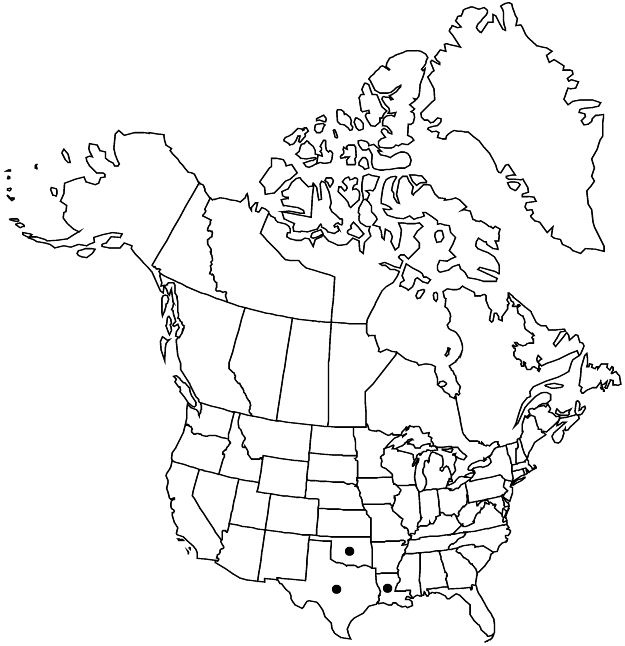Linum imbricatum
Field & Lab. 25: 32. 1957.
Herbs, annual, 3–30 cm, glabrous proximally, conspicuously short hirsute distally with stout-based hairs. Stems spreading to ascending or erect, branched from base. Leaves: proximalmost opposite, middle and distal alternate, closely imbricate, proximal leaves spreading-ascending, distal strongly appressed; stipular glands absent; blade linear-lanceolate, 5–9 × 0.5–1.2 mm, margins entire, distal leaves sparsely ciliate, apex short-awned; midrib cartilaginous. Inflorescences panicles; bracts ciliate. Pedicels 2–11 mm. Flowers: sepals persistent, ovate, 4.2–6.1 mm, margins broad, purplish, scarious, prominently toothed distally, not glandular-toothed, apex conspicuously awn-shaped; petals yellow, with or without dark red base, obovate, 6.5–8 mm; stamens 5 mm; anthers 0.6–1.2 mm; staminodia absent; styles connate to within 0.3–0.8 mm of apex, 2–4.3 mm; stigmas capitate. Capsules broadly ovoid, 2.6–3 × 2.9–3.3 mm, apex rounded, dehiscing into 5, 2-seeded segments, segments persistent on plant, false septa hyaline, with cartilaginous portion conspicuously broader near base, proximal margin appressed-pilose, otherwise glabrous. Seeds 2–2.6 × 1.1–1.5 mm. 2n = 30.
Phenology: Flowering Apr–May.
Habitat: Sandy or rocky open ground.
Elevation: 0–400 m.
Distribution

La., Okla., Tex.
Discussion
Linum imbricatum stamens have red filaments and yellow pollen and anthers, a very showy combination against the broadly bowl-shaped, butter yellow corollas often with a broad, wine red base. The stems are terete proximally and strongly ribbed distally; the sepals persist even in fruit. Linum imbricatum occurs in southern Oklahoma, is scattered in Texas, and is known from one report from Acadia Parish, Louisiana.
Selected References
None.